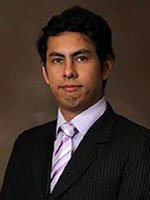
The Department of Chemical Engineering is proud to announce the Dissertation Defense of Ph.D. candidate Raul Velasco Guachalla
Title: “Advanced Techniques for Reservoir Engineering and Simulation”
Advisor: Dr. Milind Deo
Date: Monday, October 26, 2015 3:30pm in MEB 3235
Abstract:
The outstanding surge in hydrocarbon production from unconventional reservoirs is unprecedented. Profitable oil prices and new technologies have untapped massive oil and gas resources in recent years. However, the correct exploitation of these resources has been dampened by the lack of understanding of these systems. Research efforts to understand and properly assess unconventional resources have exploded in the literature. In this research work, a series of advancements in reservoir production analysis, simulation modeling and simulation development are made.A semi-analytical method based on conventional material balance was developed to approximate reservoir pressure distributions and permeability. One of the strengths of this method is that it only requires of limited information to be viable. Reservoirs with dry gas and/or high gas oil ratios are handled with an additional average pressure correction factor that takes gas compressibility into account. Hence, this method can be used for any type of fluid and fluid flow as long as the correct material balance formulation and surrogate curves are employed. Verification of the method is made through comparison with synthetic data and a field case study.Furthermore, a standardized simplification workflow for hydraulically stimulated reservoirs was introduced. The aim of this workflow, is to guide the engineer when developing a simplified reservoir simulation model with multiple wells and fractures. Simplified models have been around for a long time in the literature, however, their applicability to field-scale projects is very limited. Models that result from the application of this workflow are shown to retain the low simulation run-times characteristic of popular single-fracture models. In addition, fluid rate results from the proposed workflow models are in good agreement with results from full-scale simulation models. This is not the case for the single-fracture model which loses accuracy as the complexity of the project grows.Lastly, a new discrete fracture model formulation is implemented in a control-volume finite element simulator. This new fracture model provides fractures with their own control volumes and gives them freedom to be placed anywhere in the matrix domain. Verification of this implementation is made through comparison with analytical expressions and other well-stablished simulators.